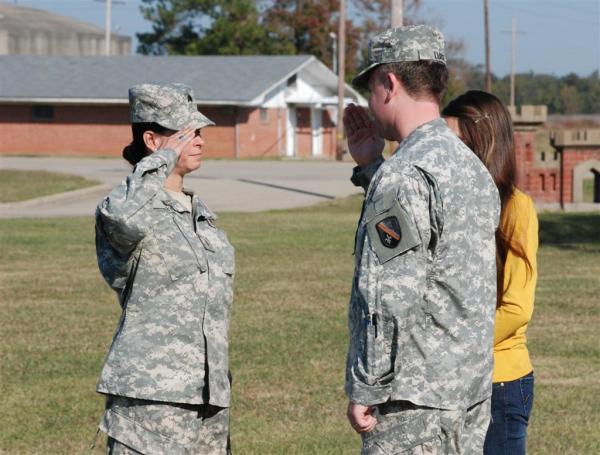

Traditionally, the enlisted military member average ranged between 18 and 24 years old, with little-to-no career or higher education background. But due to a changing economic landscape, the pool of qualified recruits entering the enlisted United States military now ranges from 18-year-old high school graduates to 35-year-olds with doctorates in music. This change in the enlistment age definitely fosters a larger pool of America’s “best and brightest” service members, but the contrast from historical trends is still a new and evolving development in community, work center and supervisory relationships.
While rank and age are no longer correlating entities, they can be addressed as such while still honoring the tradition and reverence of rank structure. Sometimes, this is a tough barrier to overcome. We make a lot of assumptions about ages and rank.
“Kids these days don’t know the value of hard work and want everything right now.”
“They’re lazy and need to be babysat.”
“Anyone over 30 is out of shape and out of touch with today’s youth and technological advances.”
“It’s awkward to tell someone my dad’s age what to do when I’m supervising them.”
Yet all of these assumptions are just perceptions that reinforce barriers to fostering the essence of the military spirit: relationships and community rooted in the common desire to serve, develop, and lead. These perceptions also create confusion and frustration, and can have a deep and lasting impact.
Consider a new supervisory relationship. A supervisor and subordinate meet to over go expectations and career goals. In theory, this is supposed to be individualized based on the ratee’s job, skills, and expectations set forth by the supervisor as he or she would like the service member develop. In reality, the supervisor may need to save time and gives a standard spiel to convey expectations: Don’t drink under age. Take classes to further your education. Come to work on time. Let me know if something goes wrong.
While these expectations are certainly valid, fair and aligned with professional military conduct, consider what it does to the developing relationship if the following is true. Your subordinate, although a junior enlisted, is well over the legal drinking age. Perhaps your subordinate already has a post-secondary education degree. The supervisor has unnecessarily infantilized this individual without even realizing it. As a byproduct, the supervisor just strained the relationship by not taking the time to get to know his or her subordinate. The troop may feel slighted and misunderstood as he or she is perceived through the lens of rank and age as opposed to solely rank and merit. How then will that relationship continue to develop?
On the contrary, older members may look have difficulty separating talking down to subordinates when in they are in fact trying to offer life advice. Both of these situations can evoke natural responses and feelings, but they can adversely impact the mission and atmosphere of the working relationship.
Although the biases and assumptions surrounding age and rank impact our daily lives, both in military roles and the greater community, as our military culture continues to change and become more “non-traditional,” it is necessary to combat these barriers. Once we are aware of these stereotypes and assumptions, we can work to stop them from affecting our most important mission: taking care of business no matter what. Rank honors merited responsibility and experience within the military; however, we need to recognize that everyone has taken different paths towards rank. Their goals are different, their motivations are different, but by focusing on knowing people as people and not by their age can help guide the path to a successful military career and culture.